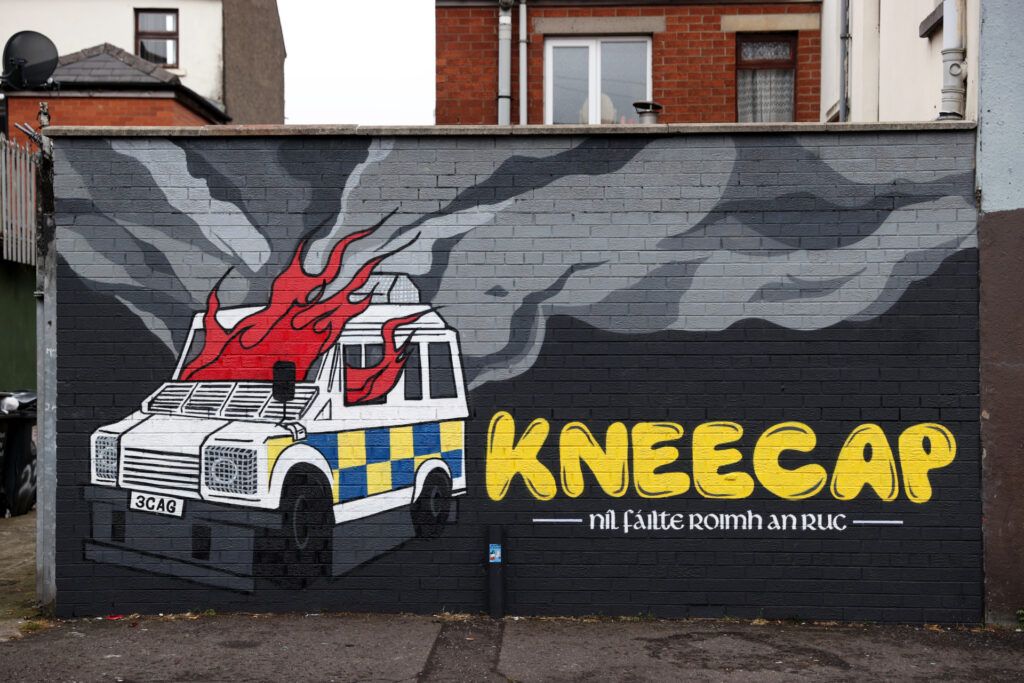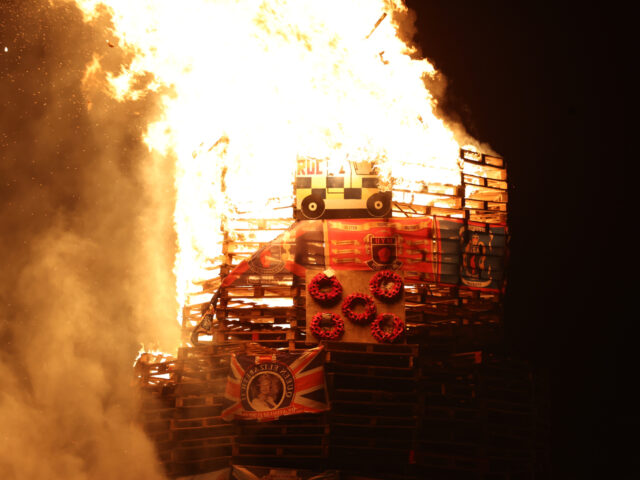Irish Nationalists in Northern Ireland burnt a picture of the Queen, along with a number of other British symbols on bonfires held on Monday night.
An image of the Queen blowing gum was burnt on a bonfire in Derry last night by Irish Nationalists, with local media being filled with reports of various sectarian incidents linked to a Catholic religious holiday celebrated heavily in the region.
The actions are not unusual for the region, with on and off sectarian violence has been a hallmark of Northern Ireland for hundreds of years since it was settled by the British in the early 1600s, with the 1998 Good Friday agreement establishing a fragile peace through the implementation of a power-sharing agreement between pro-Irish Nationalist Catholic communities, and pro-British Unionist protestant communities.
According to a report by the Irish Independent, the image of the Queen was burnt alongside union flags, at least one Israeli flag, poppy wreaths, as well as one image of a landrover belonging to the local police service, the PSNI.
Also burnt at the bonfire in Derry — which was reportedly attended by thousands of people — was a flag of the UK’s infamous Parachute Regiment that shot dead 13 people in a predominantly Catholic part of the city on January 30, 1972.
Meanwhile, a cultural event that was partly funded by the UK government through Tourism Northern Ireland seemingly aimed at trying to combat ethnic divisions in Northern Ireland has also come under fire for allegedly featuring sectarian pro-IRA chanting during the performance of one headline act.
According to a report by the Belfast Telegraph, “scores” of young people chanted “oh ah, up the ‘ra” (a pro-IRA chant) during a performance by the Wolfe Tones, an Irish band famous for its pro-Nationalist ballads.
This performance followed an event earlier in the week by another Irish Nationalist music group, Kneecap, who unveiled a mural in West Belfast on Friday that depicted a Police Service of Northern Ireland (PSNI) vehicle engulfed in flames, alongside the caption “níl failte roimh an RUC”, or “the RUC are not welcome”.
The term RUC — standing for Royal Ulster Constabulary — is often used by more hardline elements within the Irish republican movement in reference to the PSNI, with the RUC being the previous police force that operated in the six-county region that ultimately became infamous for its pro-Unionist sectarian stance.
In response to the outrage caused by the mural, Kneecap thanked the pro-British Democratic Unionist Party — many of whom had brought attention to the monument through their denunciations — while describing the installation as “just a piece of fine art”.

Irish language rap group Kneecap’s mural of a burning police Land Rover on Hawthorn Street in Belfast. There have been calls for political leadership after a series of incidents across the weekend, including pro-IRA chants at a concert in west Belfast. The Wolfe Tones played their annual gig to close Feile an Phobail in west Belfast on Sunday evening. Picture date: Monday August 15, 2022. (Photo by Liam McBurney/PA Images via Getty Images)
The burning of the British symbols has been met with outrage from a number of pro-British Unionist politicians in the region, with many calling on the leader of Northern Ireland’s branch of Irish Nationalist party Sinn Féin to show “leadership” and oppose the “hatred” shown by the bonfire.
However, while some in the party have condemned the event, the majority of those in the party — which has in the past been traditionally linked with the Nationalist terrorist group the Provisional IRA — appear to have remained largely quiet about these recent sectarian incidents.
Meanwhile, the PSNI has reportedly confirmed that a number of hate crime-related investigations are underway in relation to the placing of certain pro-UK images on bonfires.
The burning of the symbols comes after Unionists in the region burnt hanging effigies of Nationalist politicians last month, as part of celebrations commemorating the victory of the protestant William of Orange over Catholic King James II in 1690.

COMMENTS
Please let us know if you're having issues with commenting.